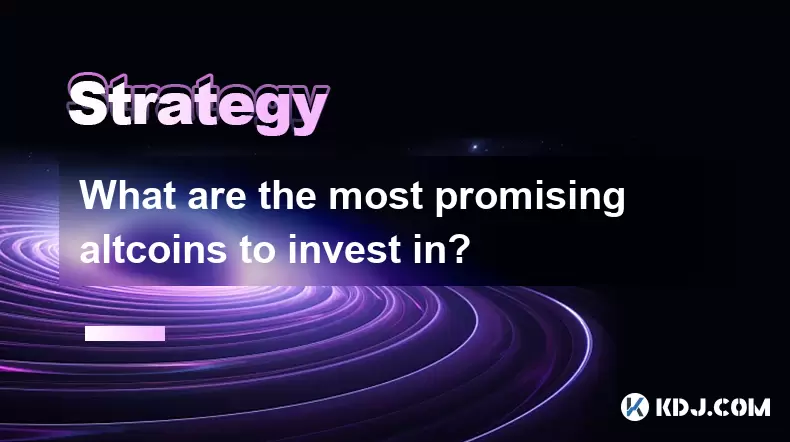-
 Bitcoin
Bitcoin $118300
1.01% -
 Ethereum
Ethereum $4215
0.69% -
 XRP
XRP $3.198
-3.83% -
 Tether USDt
Tether USDt $1.000
-0.01% -
 BNB
BNB $803.4
-0.53% -
 Solana
Solana $180.3
-0.67% -
 USDC
USDC $0.9998
-0.01% -
 Dogecoin
Dogecoin $0.2334
-1.49% -
 TRON
TRON $0.3394
0.86% -
 Cardano
Cardano $0.7980
-1.45% -
 Chainlink
Chainlink $22.19
6.65% -
 Hyperliquid
Hyperliquid $43.41
0.13% -
 Stellar
Stellar $0.4407
-3.13% -
 Sui
Sui $3.843
-2.24% -
 Bitcoin Cash
Bitcoin Cash $564.7
-3.74% -
 Hedera
Hedera $0.2588
-3.41% -
 Ethena USDe
Ethena USDe $1.001
0.00% -
 Avalanche
Avalanche $23.64
-3.37% -
 Litecoin
Litecoin $120.0
-4.01% -
 Toncoin
Toncoin $3.342
-1.11% -
 UNUS SED LEO
UNUS SED LEO $9.038
0.60% -
 Shiba Inu
Shiba Inu $0.00001347
-0.81% -
 Uniswap
Uniswap $10.69
-4.58% -
 Polkadot
Polkadot $4.034
-1.30% -
 Dai
Dai $1.000
0.01% -
 Bitget Token
Bitget Token $4.472
-1.52% -
 Cronos
Cronos $0.1571
-3.04% -
 Pepe
Pepe $0.00001207
-2.21% -
 Monero
Monero $273.8
-3.19% -
 Ethena
Ethena $0.7520
2.75%
How to learn from failed transactions?
Failed cryptocurrency transactions stem from various technical and human errors, with common causes including insufficient funds, invalid addresses, and network congestion, necessitating robust prevention mechanisms and recovery strategies.
Feb 25, 2025 at 10:48 pm

Key Points:
- Understanding the Types of Failed Transactions
- Analyzing the Root Causes of Failures
- Identifying Prevention Mechanisms
- Devising Recovery Strategies
- Implementing Best Practices
Article:
Step 1: Understanding the Types of Failed Transactions
Failed transactions in the cryptocurrency realm can stem from various technical and human errors. Here are some common types:
- Insufficient Funds: Occurs when the sender's account balance does not cover the transaction amount and fees.
- Invalid Address: Involves sending funds to an incorrect or invalid cryptocurrency address, resulting in lost funds.
- Network Congestion: Occurs when the blockchain network is overloaded with transactions, leading to delays and potential failures.
- Double-Spending: Occurs when the same cryptocurrency is spent twice or more, violating the fundamental principles of blockchain technology.
- Suspicious Activity Flagging: Transactions suspected of being related to fraud or illicit activities may be flagged and rejected by exchanges or blockchain networks.
Step 2: Analyzing the Root Causes of Failures
To prevent future failed transactions, it's crucial to identify the root causes behind specific failures. Consider the following factors:
- Human Error: Typos or incorrect data entry can lead to invalid transactions or funds being sent to the wrong recipient.
- Software Bugs: Technical glitches or software issues can trigger unexpected failures.
- Blockchain Congestion: High transaction volume on the blockchain network can cause delays and increase the likelihood of failures.
- Security Breaches: Compromised accounts or malicious activities can result in unauthorized transactions or thefts.
Step 3: Identifying Prevention Mechanisms
Implementing safeguards can significantly reduce the risk of failed transactions. Here are some effective prevention mechanisms:
- Address Verification: Confirming recipient addresses before sending funds can prevent errors and safeguard against invalid transactions.
- Confirmation Process: Utilizing transaction confirmation mechanisms allows users to verify the validity of transfers and approve them before finalization.
- Rate Limiters: Implementing rate limits on transaction submissions can help prevent network congestion and reduce the chance of failures.
- Multi-Factor Authentication: Requiring multiple forms of authentication before executing transactions enhances security and reduces the risk of unauthorized access.
Step 4: Devising Recovery Strategies
In the event of a failed transaction, it's essential to have recovery strategies in place. Here are some steps to consider:
- Contact Support: Reach out to the relevant cryptocurrency exchange or blockchain network for assistance in resolving failed transactions.
- Check the Transaction ID: Retrieve the transaction ID to track the status of the transaction and identify any potential errors.
- Dispute the Transaction: If the failure was due to an external factor, such as a fraudulent transaction or technical issue, consider disputing the transaction with the relevant party.
Step 5: Implementing Best Practices
Adopting best practices can further minimize the risk of failed transactions. Here are some essential guidelines:
- Educate Users: Empower users with the knowledge to prevent human errors and avoid malicious activities.
- Monitor Transactions: Regularly monitor transactions to detect any suspicious activity or potential failures.
- Utilize Reliable Software: Employ reputable and well-developed software applications to minimize software bugs and glitches.
- Backup Data: Maintain secure backups of cryptocurrency wallets and transaction records to safeguard against data loss or theft.
FAQs:
- What is the most common reason for failed transactions in cryptocurrency?
- Insufficient funds and invalid addresses are among the most common causes of failed cryptocurrency transactions.
- Can failed transactions be reversed?
- Some failed transactions, such as those due to network congestion or software bugs, may be reversible. However, it depends on the specific circumstances and the policies of the blockchain network involved.
- How can I recover funds from a failed transaction?
- Contacting the relevant cryptocurrency exchange or blockchain network, checking the transaction ID, and potentially disputing the transaction are key steps in recovering funds from a failed transaction.
- What are some tips to prevent failed transactions?
- Verifying recipient addresses, using confirmation processes, implementing rate limiters, and maintaining security are essential measures to prevent failed transactions.
- How can I learn from failed transactions?
- Analyzing the root causes of failures, identifying prevention mechanisms, and devising recovery strategies are crucial aspects of learning from failed transactions to enhance future security and efficiency.
Disclaimer:info@kdj.com
The information provided is not trading advice. kdj.com does not assume any responsibility for any investments made based on the information provided in this article. Cryptocurrencies are highly volatile and it is highly recommended that you invest with caution after thorough research!
If you believe that the content used on this website infringes your copyright, please contact us immediately (info@kdj.com) and we will delete it promptly.
- Navigating the Week: Other Days, Days, and Your Schedule
- 2025-08-10 16:30:16
- DALPY's Presale Success Fuels CEX Listing Speculation: What's Next?
- 2025-08-10 16:30:16
- Crypto Gains, Strategy, and Millions: Decoding the Hottest Trends
- 2025-08-10 14:30:12
- Coinbase Dives into DEX Trading: A New Era for US Crypto Users (Except You, New York!)
- 2025-08-10 14:30:12
- Kaspa (KAS) Price Prediction: August 10th's Breakout Watch
- 2025-08-10 14:50:12
- Humanity Protocol Mainnet Launch: A New Era of Crypto Integration?
- 2025-08-10 14:50:12
Related knowledge

How to use stop-loss orders to limit potential losses?
Aug 08,2025 at 02:01pm
Understanding Stop-Loss Orders in Cryptocurrency TradingA stop-loss order is a risk management tool used by traders to automatically sell a cryptocurr...

What are the most promising altcoins to invest in?
Aug 10,2025 at 11:42am
Understanding the Role of Private Keys in Cryptocurrency WalletsIn the world of cryptocurrency, private keys are the cornerstone of ownership and cont...

How to read cryptocurrency charts and use technical analysis?
Aug 08,2025 at 11:08am
Understanding the Basics of Cryptocurrency ChartsCryptocurrency charts are graphical representations of price movements over time. These charts are es...

How to do your own research (DYOR) before investing in a crypto project?
Aug 08,2025 at 09:07pm
Understanding the Core Principles of DYOR in CryptocurrencyEngaging in due diligence before investing in any cryptocurrency project is essential to mi...

How to build a diversified crypto portfolio?
Aug 09,2025 at 12:21pm
Understanding the Importance of Diversification in CryptoDiversification in the cryptocurrency space is a strategy used to reduce risk by spreading in...

How to avoid common crypto investment mistakes?
Jul 13,2025 at 01:35am
Understanding the Risks of Crypto InvestmentInvesting in cryptocurrency can be highly rewarding, but it also comes with significant risks. One of the ...

How to use stop-loss orders to limit potential losses?
Aug 08,2025 at 02:01pm
Understanding Stop-Loss Orders in Cryptocurrency TradingA stop-loss order is a risk management tool used by traders to automatically sell a cryptocurr...

What are the most promising altcoins to invest in?
Aug 10,2025 at 11:42am
Understanding the Role of Private Keys in Cryptocurrency WalletsIn the world of cryptocurrency, private keys are the cornerstone of ownership and cont...

How to read cryptocurrency charts and use technical analysis?
Aug 08,2025 at 11:08am
Understanding the Basics of Cryptocurrency ChartsCryptocurrency charts are graphical representations of price movements over time. These charts are es...

How to do your own research (DYOR) before investing in a crypto project?
Aug 08,2025 at 09:07pm
Understanding the Core Principles of DYOR in CryptocurrencyEngaging in due diligence before investing in any cryptocurrency project is essential to mi...

How to build a diversified crypto portfolio?
Aug 09,2025 at 12:21pm
Understanding the Importance of Diversification in CryptoDiversification in the cryptocurrency space is a strategy used to reduce risk by spreading in...

How to avoid common crypto investment mistakes?
Jul 13,2025 at 01:35am
Understanding the Risks of Crypto InvestmentInvesting in cryptocurrency can be highly rewarding, but it also comes with significant risks. One of the ...
See all articles

























































































